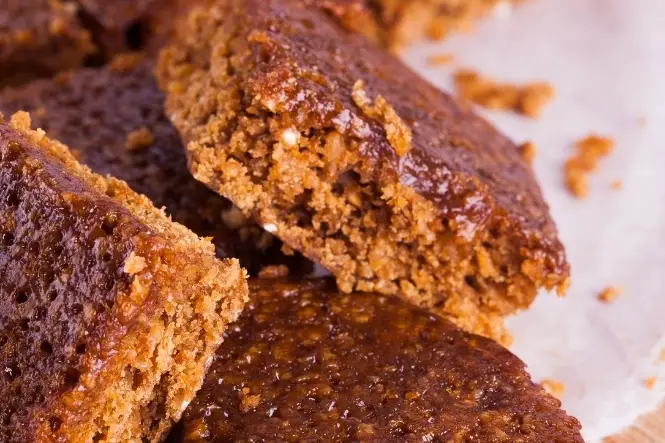Join us as we traverse the picturesque landscapes of Northern England, where a cornucopia of mouthwatering traditional baked goods awaits your indulgence. From the piquant Eccles cakes of Lancashire in the west to the irresistible Fat Rascals of Yorkshire, there is a myriad of treats to satiate even the most discerning of palates.
These time-honoured recipes have persevered for centuries, passed down through generations and still prepared in homes and local bakeries to this very day. However, we must exercise caution when tempted to sample shop-bought versions of beloved classics like parkin or Manchester tart. It is imperative to choose your source wisely, as many mass-produced cakes bear little resemblance to the original recipes crafted with old-fashioned techniques and discerning taste testers.
Let’s begin our culinary expedition with the traditional cakes of Lancashire. Eccles cakes, believed to have originated from an eighteenth-century recipe, present themselves as delightful small round puff pastry parcels filled with a delectable mixture of dried fruit, sugar, and spices. Recognisable by the three slashes adorning their sugar-coated tops, Eccles cakes deliver an explosion of flavors that will leave you craving more.
Another Lancashire specialty, Goosnargh cakes, emerges as a culinary gem associated with Easter. Hailing from the village of Goosnargh itself, these cakes tantalise the taste buds with the distinct essence of caraway seeds, transporting you to a realm of seasonal delight.
Now, let’s delve into the realm of the Manchester Tart or Pudding, an iconic creation stemming from Mrs. Beeton’s recipe. Comprising a buttery shortcrust pastry base layered with jam and custard, this tart offers a harmonious symphony of flavorus that will surely captivate your senses.
Let us not forget the enduring allure of gingerbread—a confection that has graced baking endeavours since the Middle Ages. Ginger, renowned for its preservative qualities and aiding digestion, takes center stage in this timeless treat. Allow me to share with you a tried-and-true gingerbread recipe that will transport you to a realm of culinary bliss:
Gingerbread Recipe:
Ingredients:
- 225g (8oz) plain flour
- ½ teaspoon bicarbonate of soda
- ½ teaspoon cream of tartar
- 2 teaspoons ground ginger
- 175g (6oz) butter
- 175g (6oz) soft brown sugar
- 1 tablespoon golden syrup
Instructions:
- Preheat the oven to 170°C (gas mark 3) and grease and line an 8″ sandwich tin.
- Sift the flour, bicarbonate of soda, cream of tartar, and ground ginger into a bowl.
- Add the butter and rub it into the dry ingredients using your fingertips until the mixture resembles breadcrumbs.
- Stir in the soft brown sugar and golden syrup.
- To easily handle the golden syrup, warm the spoon first, allowing the syrup to slide off effortlessly.
- Transfer the mixture into the prepared tin, spreading it evenly.
- Bake for approximately 45 minutes or until the gingerbread turns a delightful golden-brown hue.
- While the gingerbread is still hot, sprinkle it with extra sugar to lend a satisfying crunch.
- Allow the gingerbread to cool in the tin before transferring it to an airtight container, where it will keep well.
As we venture further into Yorkshire, we encounter the region’s own rendition of gingerbread known as parkin—a delectable treat believed to have been invented by Viking settlers and closely associated with Guy Fawkes Night, celebrated on the 5th of November.
Intriguingly, Pontefract or Pomfret cakes, despite their cake-like moniker, are, in fact, sweets bursting with the distinct flavors of liquorice. Immerse yourself in the vibrant atmosphere of the annual Liquorice Festival held every July in Pontefract, affectionately known as The Liquorice Capital of England, and relish in the delightful world of these unique confections.
Lastly, we encounter the enigmatic Fat Rascals—scones laden with almonds and cherries, whose etymology remains a mystery. Nevertheless, everyone unanimously agrees that the best place to experience these delectable treats is Betty’s tearooms in the historic city of York. Indulge in the rich flavors and textures of Fat Rascals as you bask in the charm of Betty’s inviting ambiance.
Fat rascals
- 1 egg
- 150g (5oz) plain flour
- 150g (5oz)self-raising flour
- 1 teaspoon baking powder
- 130g (4½ oz)butter
- 110g (4oz)caster sugar
- 1 orange
- 1 lemon
- ½ teaspoon cinnamon
- ½ teaspoon nutmeg
- 110g (4oz) sultanas
- 50g (2oz)raisins
- 50 ml (2fl oz)milk
For glaze
- 1 egg yolk
- pinch of salt
- glace cherries
- blanched almonds
Preheat the oven to 200ºC, gas mark 6. Grease a baking tray.
Sieve the flours and baking powder into a bowl and add the butter. Rub in with your fingertips until you have a breadcrumb-like mixture. Add the sugar, the zest of the orange and lemon, spices and dried fruit. Mix and add the beaten egg and as much milk as you need to make a soft but not sticky dough. Divide the dough into 6 pieces and shape into rounds about 2 cm deep.
Mix the egg yolk and salt with about a tablespoon of water and brush over the tops of the scones. Decorate with cherries and almonds. Place on the baking tray and bake for about 15 minutes or until golden.
Serve as fresh as possible.
For those unable to embark on the journey to Yorkshire, fret not! You can still savour the quintessential taste of Yorkshire Custard Tart by following this delightful recipe: Mary Berry’s Custard Tart
As our culinary adventure through the north of England draws to a close, allow me to impart one final tip: these traditional delicacies are best savoured fresh. Gather your loved ones, prepare these scrumptious recipes with care, and embark on your own gastronomic odyssey through the rich tapestry of northern England’s baked goods. Bon appétit!


